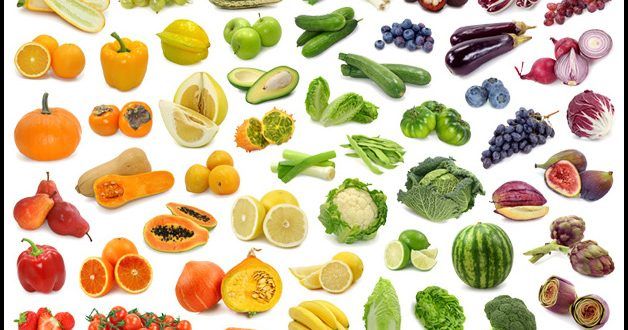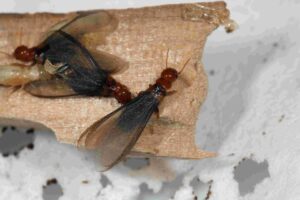
Introduction to Man-Made Fruits and Vegetables
A. Definition of Man-Made Fruits and Vegetables Man-made fruits and vegetables are cultivated crops that have been intentionally modified or selectively bred by humans to exhibit specific traits or characteristics. These modifications can range from traditional breeding methods to modern genetic engineering techniques.
B. Historical Context of Human Cultivation and Domestication Throughout history, humans have played a pivotal role in the cultivation and domestication of plants for food, medicine, and other purposes. The process of domestication involves selecting and propagating plants with desirable traits, leading to the development of new crop varieties over time.
C. Importance of Understanding the Origins of Cultivated Crops Understanding the origins of cultivated crops is essential for appreciating the diversity of plant life and the contributions of human innovation to agriculture. By examining the history and development of man-made fruits and vegetables, we gain insight into the complex relationship between humans and plants.
Examples of Man-Made Fruits
A. Hybrid Fruits
- Hybrid fruits are created through cross-breeding techniques, where two different varieties of plants are crossed to produce offspring with desired traits. This process allows breeders to combine the characteristics of different fruit species to create new varieties.
- Techniques such as controlled pollination and selection are used to develop hybrid fruits with improved flavor, texture, yield, or disease resistance. Examples include the tangelo, a cross between a tangerine and a grapefruit, and the pluot, a hybrid of plum and apricot.
- Hybrid fruits have become increasingly popular in modern agriculture and horticulture, offering growers and consumers a diverse array of options for fresh produce.
B. Genetically Modified Fruits 1. Genetically modified (GM) fruits are engineered through biotechnology methods such as gene splicing and genetic transformation. These techniques allow scientists to modify the genetic makeup of fruit crops to introduce new traits or enhance existing ones. 2. GM fruits may be engineered for traits such as improved shelf life, resistance to pests and diseases, or enhanced nutritional content. Examples include genetically modified papayas resistant to papaya ringspot virus and Arctic apples engineered to resist browning. 3. The development and commercialization of genetically modified fruits have sparked debates over safety, environmental impact, and consumer acceptance. While proponents argue that GM crops offer benefits such as increased yields and reduced pesticide use, critics raise concerns about potential health risks and ecological consequences.
C. Cultivated Fruits 1. Cultivated fruits are the result of centuries of selective breeding and cultivation practices aimed at domesticating wild plant species. Through careful selection and propagation, humans have transformed wild ancestors into the familiar fruits we enjoy today. 2. Examples of cultivated fruits include apples, which originated from wild crabapples in Central Asia, and bananas, which were domesticated from wild plantains in Southeast Asia. These cultivated fruits have undergone genetic changes over generations to produce the varieties we recognize in supermarkets and orchards. 3. The cultivation of fruits has played a crucial role in human history, providing sustenance, nutrition, and cultural significance to societies around the world. From ancient civilizations to modern agricultural systems, cultivated fruits continue to be an essential part of the human diet.
Examples of Man-Made Vegetables
A. Hybrid Vegetables
- Hybrid vegetables are created through controlled cross-breeding of different plant varieties to produce offspring with desired traits. Plant breeders use techniques such as hand pollination and selection to develop hybrid vegetable varieties with improved flavor, yield, and disease resistance.
- Examples of hybrid vegetables include the beefsteak tomato, a cross between different tomato varieties to produce large, flavorful fruits, and the broccolini, a hybrid of broccoli and Chinese kale with tender stems and mild flavor.
- Hybrid vegetable varieties offer growers and consumers a wide range of options for fresh produce, with characteristics tailored to specific growing conditions and culinary preferences.
B. Cultivated Vegetables 1. Cultivated vegetables have been selectively bred and cultivated by humans for thousands of years, resulting in a diverse array of crop varieties adapted to different climates and growing conditions. Through careful selection and propagation, wild plant species have been transformed into familiar vegetables. 2. Examples of cultivated vegetables include carrots, which were domesticated from wild carrots in Central Asia, and lettuce, which originated from wild ancestors in the Mediterranean region. These cultivated vegetables have undergone genetic changes over time to produce the varieties we cultivate today. 3. The cultivation of vegetables has played a vital role in human nutrition and food security, providing essential vitamins, minerals, and dietary fiber to populations around the world. From ancient agricultural practices to modern farming methods, cultivated vegetables continue to be a cornerstone of the human diet.
C. Genetically Modified Vegetables 1. Genetically modified (GM) vegetables are created through genetic engineering techniques that modify the genetic makeup of vegetable crops to introduce new traits or enhance existing ones. Scientists use methods such as gene insertion and gene editing to achieve desired outcomes. 2. GM vegetables may be engineered for traits such as herbicide resistance, insect resistance, or improved nutritional content. Examples include genetically modified corn engineered to produce insecticidal proteins and genetically modified soybeans with enhanced oil profiles. 3. The development and commercialization of genetically modified vegetables have raised ethical, environmental, and regulatory concerns. While proponents argue that GM crops offer benefits such as increased crop yields and reduced pesticide use, critics raise concerns about potential risks to human health and the environment.
Impact of Man-Made Fruits and Vegetables
A. Agricultural Productivity and Food Security
- Man-made fruits and vegetables contribute to global agricultural productivity, providing essential nutrients and calories to human populations worldwide. Through advancements in crop breeding and biotechnology, farmers can increase yields and improve crop resilience to environmental stresses.
- Hybrid and genetically modified crops play a significant role in addressing food shortages and malnutrition, particularly in developing countries where access to nutritious food is limited. These crops offer opportunities for sustainable agriculture and food systems that support long-term food security and livelihoods.
- However, challenges such as climate change, soil degradation, and water scarcity pose threats to agricultural productivity and food security. Sustainable farming practices and policies are needed to ensure the resilience and sustainability of food production systems in the face of these challenges.
B. Consumer Preferences and Market Trends 1. Man-made fruits and vegetables influence consumer choices and dietary habits, shaping market demand for fresh produce and processed food products. Consumer preferences for specific crop varieties, flavors, and nutritional attributes drive innovation and investment in agricultural research and development. 2. Market trends in the agriculture and food industries reflect changing consumer preferences and emerging technologies. Demand for organic, locally grown, and heirloom varieties of fruits and vegetables has grown in recent years, reflecting consumer interest in sustainable and environmentally friendly food choices. 3. Consumer awareness and education regarding the origins and characteristics of man-made fruits and vegetables play a crucial role in shaping market trends and influencing purchasing decisions. Transparent labeling and information sharing empower consumers to make informed choices about the foods they buy and consume.
C. Environmental Implications and Biodiversity 1. Intensive agriculture and the expansion of monoculture farming practices have led to environmental degradation and loss of biodiversity in agroecosystems. Man-made fruits and vegetables may be cultivated on a large scale, contributing to habitat destruction, soil erosion, and pollution. 2. Conservation efforts to preserve genetic diversity in crop plants are essential for maintaining resilient and adaptive agricultural systems. Seed banks, botanical gardens, and genetic repositories play a critical role in safeguarding plant genetic resources for future generations. 3. Sustainable farming practices such as crop rotation, agroforestry, and integrated pest management can promote biodiversity conservation and ecosystem resilience. By preserving natural habitats and promoting genetic diversity in cultivated crops, we can build more sustainable and resilient food production systems that benefit both people and the planet.
Conclusion
Man-made fruits and vegetables represent a fascinating intersection of human ingenuity, agricultural innovation, and cultural heritage. From ancient cultivation practices to modern biotechnological advancements, humans have played a crucial role in shaping the diversity and abundance of cultivated crops. Understanding the origins and characteristics of man-made fruits and vegetables allows us to appreciate the intricate relationships between humans and plants and the profound impact of agriculture on our lives and ecosystems. By embracing sustainable farming practices and promoting crop diversity, we can ensure a resilient and bountiful food supply for future generations.


